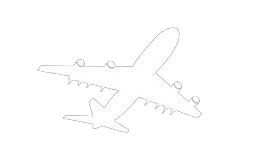Introduction
Bomber jackets have become a staple in modern fashion, seamlessly blending style, comfort, and practicality. Originally designed for military pilots, these jackets have evolved into a fashion statement embraced by people worldwide. In this guide, we will explore the history, various styles, materials, and tips on how to wear a bomber jacket to elevate your wardrobe.
The History of Bomber Jackets
The origins of the bomber jacket date back to World War I when pilots required durable and warm outerwear for flying in open cockpits. The first versions, such as the A-1 and A-2 flight jackets, were crafted from leather and featured ribbed cuffs and waistbands to provide insulation.
During World War II, the need for even warmer jackets led to the development of the B-3 bomber jacket, made from shearling and designed for high-altitude missions. Later, the MA-1, introduced in the 1950s, became the most iconic version of the bomber jacket. Constructed from nylon with an orange lining for visibility in emergencies, the MA-1 was adopted by both the military and civilians.
In the following decades, bomber jackets transcended their military origins, making their way into subcultures such as punk, hip-hop, and streetwear. Today, designers continue to innovate, offering variations that cater to diverse fashion preferences.
Styles and Variations
Bomber jackets come in many styles, each with distinct characteristics. Some of the most popular types include:
- MA-1 Bomber Jacket – The classic nylon bomber with a ribbed collar, cuffs, and waistband, typically featuring an orange lining.
- B-3 Bomber Jacket – A heavy-duty shearling jacket designed for extreme cold conditions.
- B-15 Bomber Jacket – Similar to the MA-1 but with a fur collar for added warmth.
- Varsity Bomber Jacket – Often made from wool with leather sleeves, popular in college fashion.
- Suede Bomber Jacket – A stylish and luxurious option perfect for smart-casual outfits.
- Leather Bomber Jacket – A rugged, edgy alternative that pairs well with jeans and boots.
Materials and Construction
The choice of material greatly affects the functionality and aesthetic appeal of a bomber jacket. Some common materials include:
- Nylon – Lightweight and water-resistant, ideal for casual wear.
- Leather – Durable and stylish, perfect for a bold statement.
- Suede – Soft and sophisticated, best for refined outfits.
- Wool – Provides warmth and a classic look, often seen in varsity bombers.
- Shearling – Ultra-warm and luxurious, typically used in winter bomber jackets.
How to Style a Bomber Jacket
Bomber jackets are incredibly versatile and can be styled in various ways for different occasions. Here are some outfit ideas:
Casual Looks
- Pair a classic MA-1 bomber with jeans and a plain T-shirt for a laid-back, everyday look.
- Opt for a varsity bomber over a hoodie and sneakers for a sporty streetwear vibe.
Smart-Casual Outfits
- Wear a suede bomber with chinos and a button-down shirt for a polished yet relaxed style.
- Combine a leather bomber with tailored trousers and Chelsea boots for a refined ensemble.
Winter and Layering
- A shearling bomber paired with a turtleneck and wool trousers provides warmth and elegance.
- Layer a bomber over a sweater and scarf for a cozy, winter-ready look.
Celebrities and Cultural Influence
Bomber jackets have been embraced by celebrities and influencers across generations. From Steve McQueen’s classic leather bomber to Kanye West’s modern streetwear interpretations, this jacket has maintained its relevance in pop culture. It has also been featured in films such as Top Gun, further cementing its status as a timeless piece.
Conclusion
The bomber jacket is more than just outerwear; it is a symbol of style, history, and adaptability. Whether you prefer a vintage military look or a contemporary fashion-forward outfit, there is a bomber jacket to suit your needs. Investing in a quality bomber jacket ensures you have a versatile piece that can be worn year-round, making it an essential item in any wardrobe.

